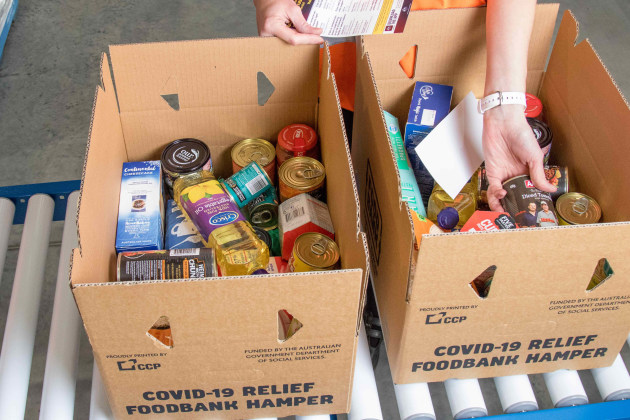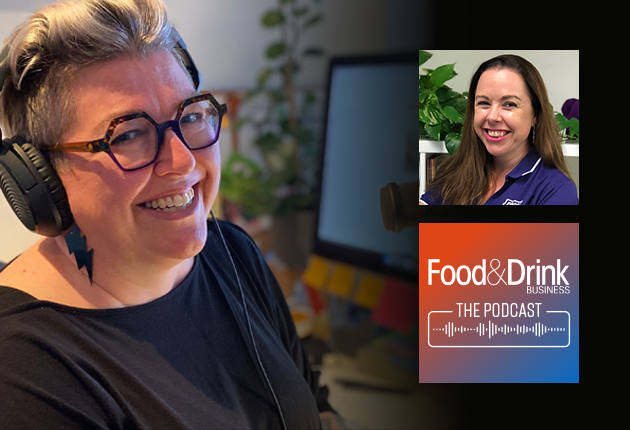More than two million households ran out of food in the last year and 1.3 million children live in households experiencing severe food insecurity, the lasted report by Foodbank Australia has found.
Foodbank Australia CEO Brianna Casey said even she was shocked by the numbers.
“These results should make everyone stop in their tracks. The numbers being reported are massive and hard to process, but they represent the harsh reality of living week to week when the cost-of-living crisis collides with an income crisis and the household budget now lists food as a discretionary spend,” Casey said.
The Foodbank Hunger Report 2022 found households ran out of food due to limited finances, with people skipping meals or going whole days without food.
The rising cost of living was the most common reason, with food and grocery prices the top cause followed by energy and housing costs.

Casey said assumptions food insecurity only affects the unemployed or homeless are incorrect, with the research showing more than half of food insecure households have someone in paid work. A third of households with mortgages have also experienced food insecurity, she added.
“We know how important it is for people to have access to nutritious food, yet the rising costs of energy, fuel, groceries, rent, and mortgages have put this fundamental need beyond the reach of more and more people with no respite in sight,” Casey said.
The term food insecurity covers a range of experiences - from being uncertain about getting enough food and compromising on nutrition right through to disrupted eating patterns and reduced food intake.
Snapshot
- On any given day, more than half a million households in Australia are struggling to meet their food needs.
- Households with children are being hit harder than others, making up 32 per cent the severely food insecure compared to the national average of 21 per cent.
- Single parent households are the worst affected of any cohort, with 37 per cent severely food insecure.
- The rising cost of living is the most common explanation – 64 per cent – for why people are failing to meet their household food requirements. Unpacking this, the cost of food and groceries is the top cause (49 per cent), followed closely by energy (42 per cent) and housing (33 per cent) costs.
- More than half (54 per cent) of food insecure households had someone in paid work.
- Nearly a third of households with mortgages (30 per cent) experienced food insecurity in the last year. The situation is even worse in regional areas (36 per cent versus 27 per cent in metro areas).
- On a typical day, 306,000 households are receiving assistance from food relief organisations.
- Foodbank Australia works with 2950 frontline charities and 2890 school breakfast programs to get over 88 million meals out to those who could use a hand.
The report signalled the problem was only going to get worse, with half of the households experiencing difficulties saying being unable to afford food was happening more often.
Casey said as the Federal Budget looms next week, she hopes it will deliver positive change.
“We have heard the treasurer caution that the October budget is not the time for new spending measures to deliver relief to struggling families, but with more than a million people a month already seeking food relief, if not now, then when?”
The food and beverage sector is a strong supporter of food relief organisations including Foodbank.
Coles has had a policy since 2019 that all unsold, edible food is sent to SecondBite and Foodbank. In FY22, it provided 37.5 million meal donations, up from 35 million the previous year.
Kellogg’s donates more than 3.7 million serves of cereal and snack foods every year, supplying Foodbank’s school breakfast program.
General Mills has an ongoing supply program with Foodbank Australia, supplying 10,000 Latina pasta packs every month.
And earlier this year, Chobani and Foodbank collaborated on the Fruit for Good yoghurt project. Chobani donates 100 per cent of profits to Foodbank, and convinced its supply chain partners to do the same. That included Woolworths, a key retail partner; MPD/ADFC Milk, key dairy partner; Visy, shipping supplier; The Van Dyke Press, foil supplier; and PakPot, pot supplier.
Simplot, Mars, and Masterfoods are other long time contributors to the Foodbank.
But in an interview with Food & Drink Business earlier this year, Casey said donations were only one part of solving food insecurity. She called for more work into why hunger is occurring in Australia and how to ensure access to safe, nutritious, and culturally appropriate is available to all.
A National Food Waste Tax Incentive would also be a game-changer, Casey said, providing a tax incentive for both the donation of food and related services.
Read Brianna Casey's column from the April edition of Food & Drink Business magazine.
Listen to our interview with Brianna Casey on the Food & Drink Business Podcast.








